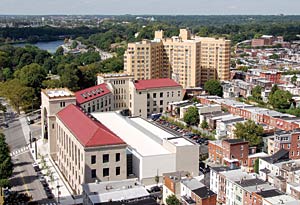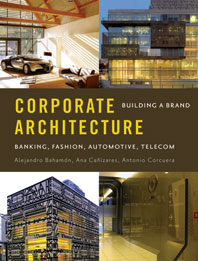It may not have been cause and effect, but the 10th anniversary of the Guggenheim Museum Bilbao late last year coincided with the opening of several new museums that seem intent on being everything Frank Gehry’s Basque bombshell is not. Let’s call it the rise of the Quiet Museum. Among them is Rafael Moneo’s low-key addition to the Prado, which has earned praise for giving precedence to the works on display rather than upstaging them with architectural bravura. But one man’s deferential is another man’s dull. Art critics seem to like the Moneo wing more than their architectural counterparts, some of whom have deemed the expansion deficient in duende. It’s not that Moneo is incapable of the grand gesture, as proven by his majestic National Museum of Roman Art (1986) in Merida, Spain. But as his countrymen say, “Otros tiempos, otros gustos.” Other times, other tastes.


Another recent anti-Bilbao is Gluckman Mayner Architects’ Perelman Building at the Philadelphia Museum of Art. This meticulous conversion of a landmark 1927 office building into galleries for modern sculpture, photography, and design epitomizes the firm’s preeminence in creating what art-world consensus deems the most consistently effective contemporary display environments. Perversely, Gluckman Mayner’s self-effacing approach has lost the firm at least one job, as I can attest from unhappy first-hand experience.
Several years ago, I served on the architectural advisory committee for the new Parrish Art Museum in Southampton, New York. We had been asked to provide a short list of six firms, the winner to be chosen by the Parrish board. Given the small-town context, intimate character of the original building, and smallish budget, we urged the client to avoid trendy names and focus instead on aspiring firms more likely to give this $50 million job their undivided attention.
Although our roster included one Pritzker Prize winner (Alvaro Siza, still a cult figure despite that coveted accolade), the rest were little known in the U.S., save for Gluckman Mayner. Thus I was stunned by the cool response of several trustees to Richard Gluckman’s presentation.
Although I reminded them that he was the one architect on our list whose work they had all surely experienced, and no doubt favorably—at New York’s Dia Art Center, the Warhol Museum in Pittsburgh, and commercial galleries too numerous to mention—they remained unmoved.
After Gluckman left the room, one trustee opined, “He can’t design a building from scratch.” Forget his firm’s unquestioned skill in making difficult art look great, whether in the recycled structures that have made up the bulk of its practice, or in its several new museums. In the end, the board rejected our recommendations and hired Herzog & de Meuron, whose de Young Museum in San Francisco had just opened to well-deserved acclaim. When I lamented to Trudy Kramer (the longtime Parrish director who retired at the end of 2007) that the board had done precisely what we warned them not to, she replied resignedly, “They want a Bilbao, and it’s hard to raise money if you don’t give them one.”
Herzog & de Meuron’s first Parrish proposal, with a costly parti of clustered pavilions, priced out at almost double the budget. In response, the client eliminated half the galleries, the money-spinning café and gift shop, and much-needed on-site storage. The pared-down second version, now pegged at $63 million, is no Bilbao.




Post a comment to this article
Report Abusive Comment